All about the bath-tank
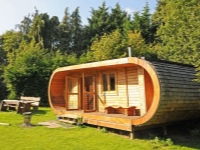
Equipping a summer or country site with a bathhouse has long been an unofficial standard. But many people want to move away from the usual, developed over many centuries, its image. In this case, it is important to know everything about the bath-tank, its varieties and methods of creation.
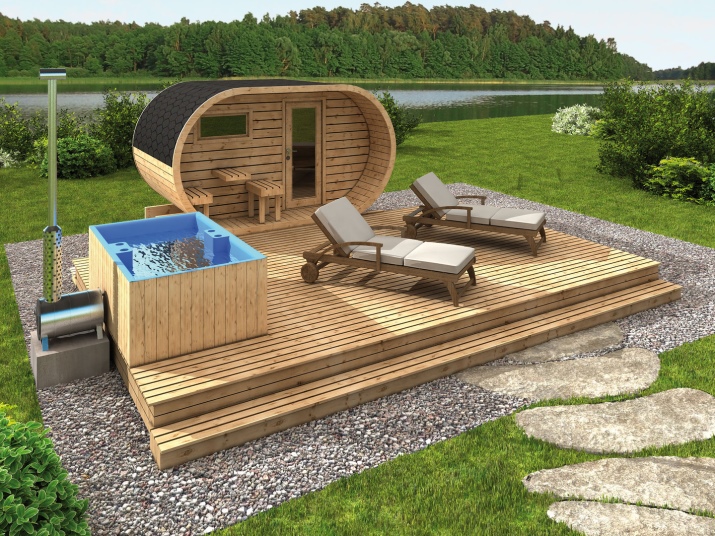
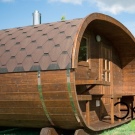
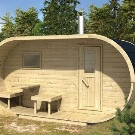
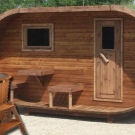

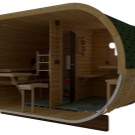
Peculiarities of
The main feature of the bath-tank is its atypical appearance. The large-sized barrel, placed on the side, looks excellent near any house. The cylindrical design reduces non-productive heat consumption. The room can be fully heated with a small number of logs.
The barrel bath can also reach the temperature faster than a traditional rectangle.
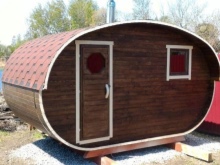
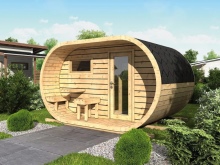
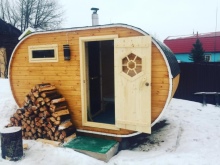
This solution is lightweight, and therefore it is put even on solid ground. And if the site is concreted, so there should be no problems all the more. Insulated bath-tank allows you to take a steam bath all year round, even in severe cold. The construction overall turns out to be inexpensive.
A serious negative point is only a relatively cramped space; only certain expensive constructions are relatively spacious.
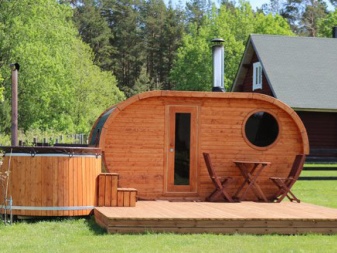
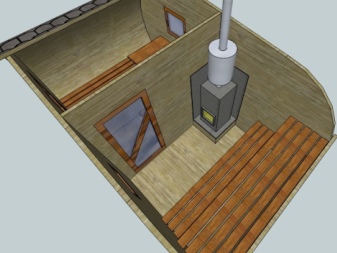
Types and models
How the bathtub-tank will be planned depends on its overall length. The smallest barrel-shaped construction is 2 m long. There is nothing inside except the steam room. The lack of an interior changing room is to some extent compensated for by the canopy visor over the entrance door.
Since there is no washing room, there must be a pool or pond nearby.
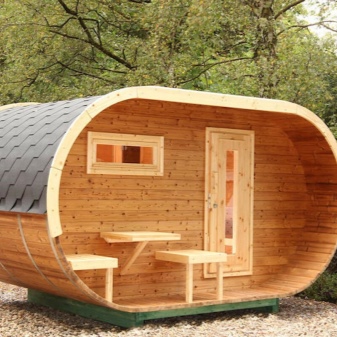
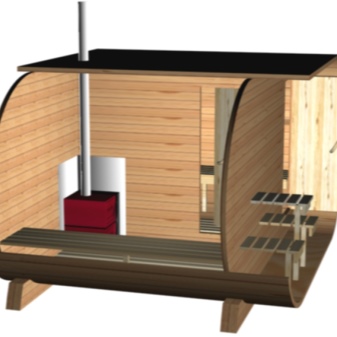
Three-meter containers allow you to equip already a checkroom up to 1 m long. With a total length of 4 m the benches are increased to 2 m. The greatest length of barrel-shaped baths can be up to 6 m. In this case, even a full-fledged rest room is allocated.
It is worth considering that the barrel-tank bathhouse is not always round - there are also oval and square modifications.

The form of an oval is found only rarely. But it always creates a picturesque view. Quite an interesting solution turns out to be a square with rounded corners. The difference can also be associated with the placement of doors. In some cases they are placed at the ends, and in others - in the side plane of the barrel.
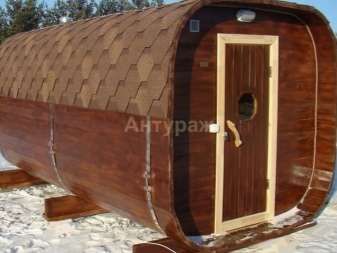
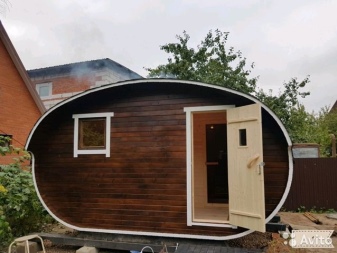
Much more important, however, the view of the created bath. Classic Russian-style steam room produces warmed humid steam. In addition to the steam room, be sure to provide room for washing. That is why the "Russian standard" can be implemented only in a large bath. A Finnish sauna is designed to be very hot and emit dry steam.
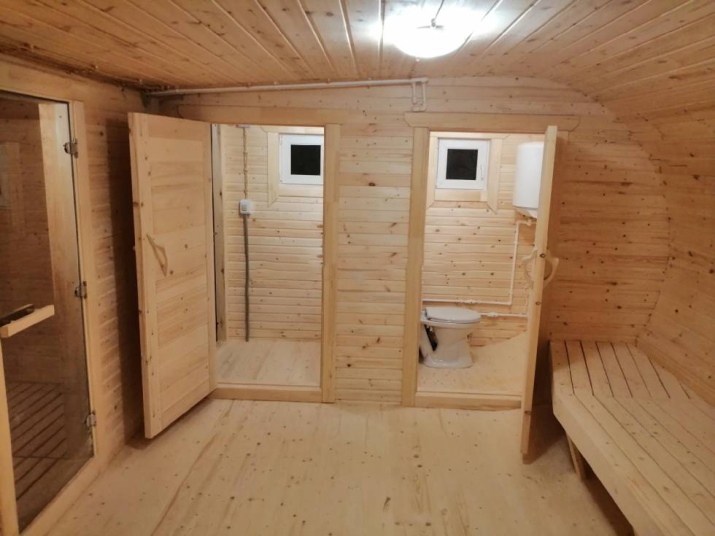
It will be necessary to provide a place to hang a bucket or to install a font. The design is designed to receive contrasting hygienic procedures. In the "tank" can be put and vat "ofuro". Its capacity is quite large, and necessarily provides a heater.
But you should not consider any exotic variants.
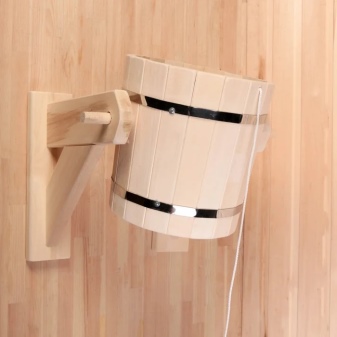
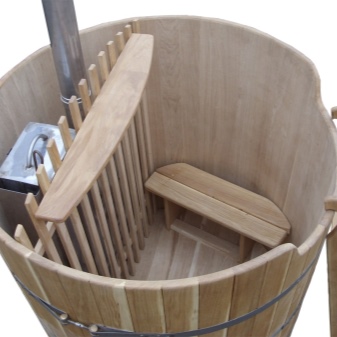
Russian barrel bath is necessarily equipped with water drainage systems. Taking into account the compactness of the room, all the walls inside are covered with fire-resistant panels. When creating a sauna the main emphasis is placed on tightness, be sure to provide ventilation sliders in the floors and walls. Horizontal bath-tanks help to significantly increase the total area. As for ofuro, they can be made in the form of a circle, ellipse; then either put a stove inside or bring the heat through the pipes outside.
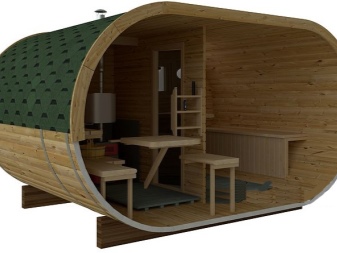
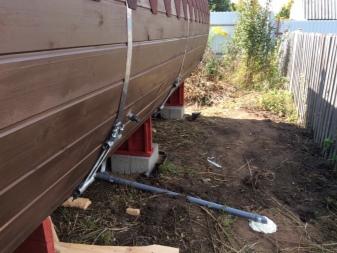
The last important gradation is by the wood used:
- oak (long-lasting, little wear, pleasing in appearance, expensive and hard to work with);
- linden (practical and safe);
- aspen (budget, but it cracks badly and deforms easily);
- cedar (has a powerful healing effect).
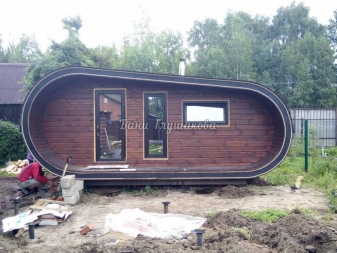
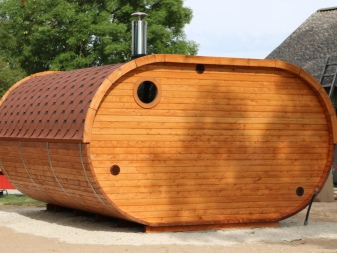
Assembling technique
Most often use frame bath barrels. They will not require the creation of a foundation. The lower plane is formed from sound edged boards with a thickness of not less than 0.5 cm. Assemble the cross-bars at a pitch of 1.5 m. They create rounded notches according to the contours of the bath; to do everything correctly, you will need strong templates. Connect the parts will help screws, and to strengthen the assembled "barrel", buy steel corners, fixing them in the corners and at the joints.
The main structural material - boards of thickness 0.6 cm with a tongue-and-groove fastening. The required volume of boards is determined by dividing the length of the circumference by the width of the boards. All wood is thoroughly sanded at the end and impregnated with an antifungal compound.
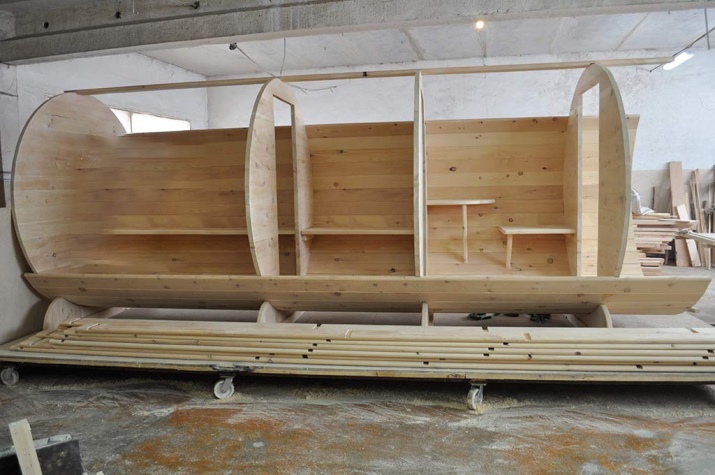
The platform should be made with a slight slope to simplify drainage. Increase strength and resistance to wear and tear helps to use steel clamps.
See the following video for an overview of the bathtub-tank.




